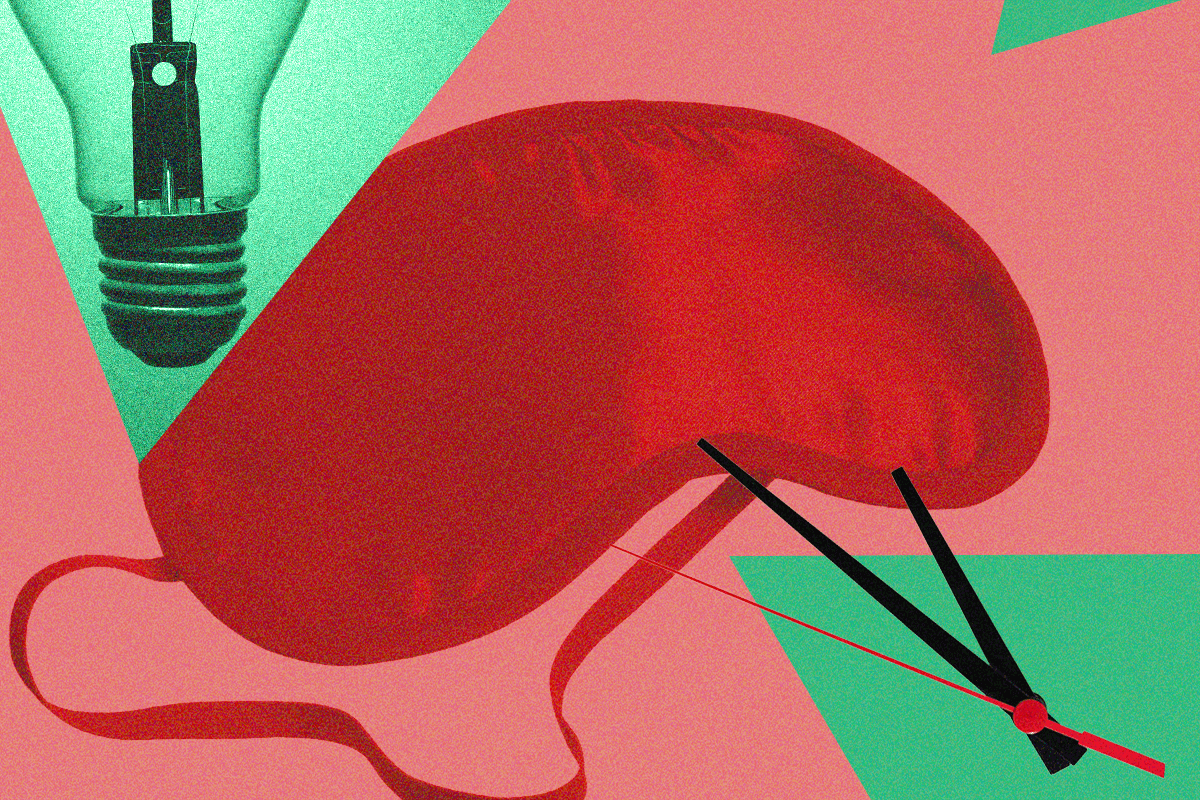Clock changes can throw you for a loop. Even a one-hour shift, as happened in most of the US on Sunday, can leave you feeling groggy and out of sync for days. That’s because your body’s internal clock—your circadian rhythm—relies on daylight, meal times, and a steady routine. When the country’s twice-yearly time change comes along, it disrupts that rhythm and leaves your body playing catch-up.
The good news is that with a few simple habits, you can help your body bounce back quickly and reset your sleep schedule naturally after a time change. Follow these tips to get back in the groove and start feeling like yourself again after those clocks turn.
What Is Daylight Saving Time?
In the US, most of the country switches between standard time and daylight saving time (DST) in November and March. Standard time is the “normal” clock time used in the fall and winter, while DST is the one-hour shift in spring and summer that shifts daylight from morning to evening.
Each year, clocks spring forward one hour in March, and we lose an hour of sleep. The clocks then fall back in November, giving us that hour back. The idea is to maximize daylight hours for work and play in the warmer months.
Daylight saving time started during World War I as a way to save energy. More daylight in the evening meant less need for artificial lighting, which was in short supply at the time. It was also thought to help farmers by giving them extra daylight in the evening. However, since farm work follows the sun, not the clock, it mostly just made their schedules trickier.
More than a century later, most Americans still follow the same ritual. Exceptions include Hawaii and most of Arizona, where plenty of daylight and desert heat make the time shift more of a hassle than a help.
Why Time Changes Mess With Your Body Clock
We tend to focus on how long we sleep, but consistency is just as important, says Rebecca Robbins, a sleep researcher at Brigham and Women’s Hospital and Harvard Medical School. “Just as important as sleep duration, if not more, is consistency of sleep schedules,” she says. “Changing by even one hour can be enough to throw our internal circuitry off.”
Your circadian rhythm relies on cues like lights, meals, and routine. Light is ultra-important here, as it suppresses melatonin, the hormone that tells your brain it’s bedtime. When daylight shifts, so do your hormones.
That rhythm conducts far more than fatigue. It regulates digestion, alertness, mood, and even immune response. When you spring forward, you’re essentially forcing your body’s clock out of sync with your environment. Falling back is gentler, since the extra hour of sleep and morning light usually help your rhythm adjust more easily.
Health Costs of Losing Sleep
The impact of time shifts can show up almost immediately. “Car accidents, heart attacks, cardiovascular sequela, mood disorders—all these things tend to stay elevated throughout the duration of being on daylight saving time,” says neurologist and sleep specialist W. Chris Winter at Charlottesville Neurology and Sleep Medicine. A study from the University of Colorado found that fatal car crashes in the US spike by about 6 percent in the week following the spring shift to DST.
Most Americans are already running on a sleep deficit. “Only 30 percent of Americans report consistently meeting their biological need for sleep,” Robbins says. A lost hour compounds that debt.
The good news is that, for most people, the effects are short-lived. But when you look at the bigger picture, even small risks add up, which is why many experts argue for sticking with standard time year-round.
How to Prepare Your Body for a Time Change
Prepping your body for a time change is about giving your body a gentle heads up. Small, deliberate tweaks to your schedule and intentional time outside can rhythm adapt before the change hits.
Shift Your Schedule Gradually
The best approach is a slow one. Experts recommend easing into the new time by shifting your bedtime and wake-up time 15 to 20 minutes earlier (or later, depending on the season) for a few days before the change. Those micro-adjustments give your internal clock a chance to recalibrate without being a total shock to the system.
Get Morning Light
Light is your most powerful tool. “We, particularly children, do best with morning light,” Winter says. “We want to start our day off from going to a dark bedroom to a bright environment.”
Try stepping outside shortly after waking up. Not only will the sunlight help regulate your internal clock, but the fresh air gives you an extra wake-up boost. If you’re up before the sun, use a light therapy lamp for 15 to 30 minutes while you eat breakfast.
Time Your Meals Wisely
According to Robbins, when you eat can have a huge impact on your body clock. “An earlier dinner is actually excellent for our sleep. It can really help reduce the risk of insomnia due to your body digesting.” Keep this in mind during any period where your sleep schedule is shifting.
To prep for any time change, it would be ideal to move up your dinner slightly earlier in the days leading up to it. Finishing dinner a half-hour or an hour earlier than normal can help your digestive system (and in turn, your circadian rhythm) adjust more smoothly to a new schedule.
Breakfast and snacks play a similar role. Eating a consistent, well-timed breakfast (generally within an hour or two of waking) signals that the day has started, while keeping lunch and snacks around the same hours each day reinforces your body’s sense of routine.
CrunchCup
The CrunchCup XL
How to Recover After a Time Change
Even if you plan ahead, the first few days after a time change can leave you feeling groggy and out of sync. The key is to ride out without stress. Your body should catch up within a week, and there are a few ways to make the shift less jarring.
Don’t Overthink It
Worrying about how tired you’ll feel can actually make things worse. “The fear of daylight saving time is often worse than it is,” Winter says. He says many spiral into “sleep anxiety”—getting so caught up in how the change might affect them that the stress itself becomes the problem.
Instead, Winter suggests giving yourself some grace. You’ve done this before: “You pulled an all-nighter in college, and you were OK the next day. Was it a great day? No, but you did it.” A single hour shift isn’t catastrophic, and staying calm about it will help your body bounce back more quickly.
Use Short Naps Strategically
If you find yourself dragging after the clock turns, a quick nap can help. Research from MIT shows that even moments of rest can boost creativity and alertness, Robbins says. Think of it as a reset, instead of a replacement for real sleep. Aim for a true power nap: 20 to 30 minutes max, and ideally before midafternoon so it doesn’t interfere with your nighttime sleep.
Keep Evenings Calm
If you’re having trouble falling asleep after a time change, focus on wind-down cues. Avoid bright light, heavy meals, and screens close to bedtime. Find a relaxing pre-sleep routine that works for you, whether that includes a warm bath, reading, or stretching. These will send signals to your body that it’s time to relax.
-
Photograph: Molly Higgins
Som Sleep
Powder Drink Mix
Stick to a Consistent Routine
Consistency is your best friend after the clocks shift. Go to bed and wake up at the same time every day, even on weekends. “Just as important as sleep duration, if not more, is consistency of sleep schedules,” Robbins says.
Same goes for meals, exercise, and outdoor light exposure. Regular patterns help your circadian rhythm relearn when to feel awake and when to wind down. Within a few days, you’ll stop thinking about what time it “used to be.”
Should We Even Keep Changing the Clock?
Researchers are increasingly questioning whether the semi-annual clock flip is worth it at all. According to Robbins, standard time (what most of us experience through fall and winter) is what most sleep experts prefer.
“It allows our biological rhythms to benefit from morning light,” she says, and most experts agree that it’s better for our bodies to get that light at the start of the day rather than tacked onto the evening.
Until the policy changes (or if it ever does), there are some silver linings. Standard time gives you more morning sun and better alignment with your natural rhythm. When DST returns in the spring, that extra evening light can feel like a much-needed morale boost after a long, dark winter.


-Reviewer-Photo-SOURCE-Louryn-Strampe.jpg)

